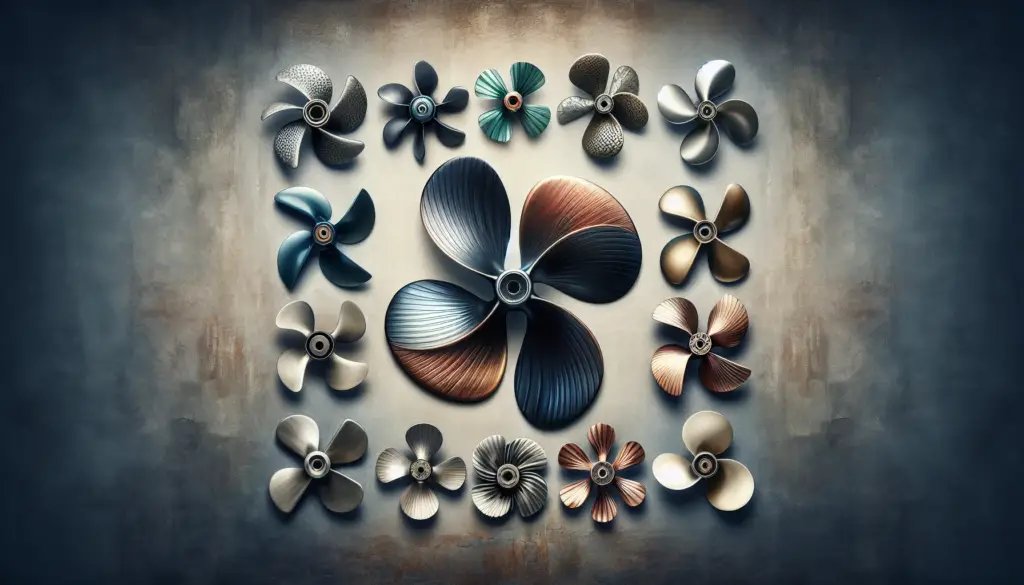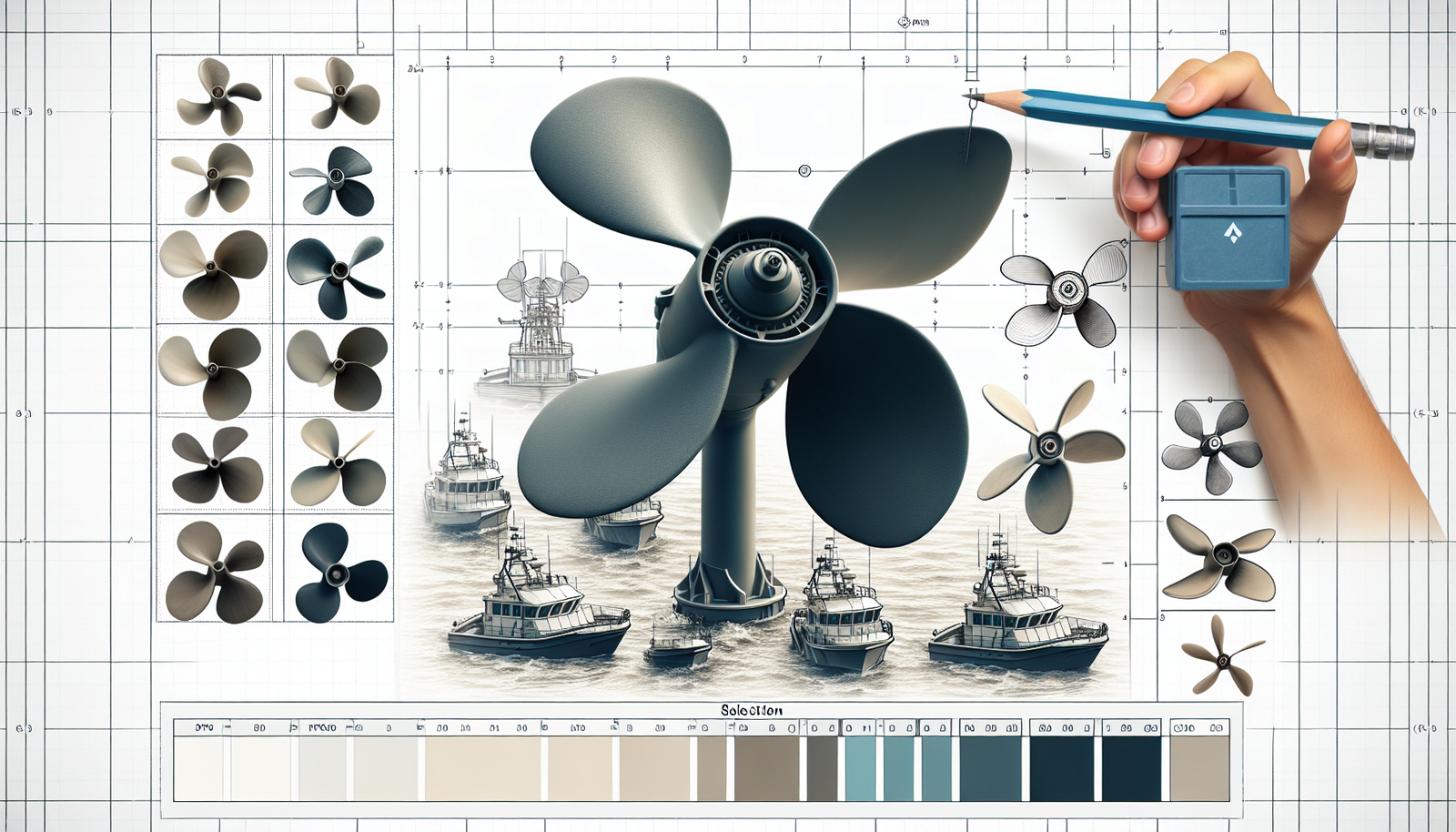Imagine setting sail on a beautiful, sunny day, but your boat can’t reach its maximum speed or the engine seems to be working too hard. The culprit could be an incorrect propeller. In the article “How To Select The Right Propeller For Your Boat Engine”, you will find comprehensive guidance on identifying the best propeller for your vessel. Flowing with essential tips and noteworthy points, your journey of understanding and choosing the correct propeller could make all the difference for your next adventurous sail or serene glide across the waters.

Understanding the Basics of a Boat Propeller
When you set sail, the thing that propels your boat forward is a piece of machinery called a propeller. But what exactly is a boat propeller and how does it work?
Defining a Boat Propeller
A boat propeller, simply put, is a fan mechanism that transmits power by converting rotational motion into thrust. Usually made up of two or more blades, its purpose is to propel your boat through the water.
Overview of how a Boat Propeller Works
The core concept of how a boat propeller works is simple. As the propeller spins, the blades cut into the water, creating areas of high pressure behind them and low pressure in front. These pressure differences push your boat forward. Much like how an airplane wing generates lift to get the plane off the ground, a propeller uses the same principles of fluid dynamics to move your boat through the water.
Importance of Choosing the Right Boat Propeller
Selecting the correct propeller is vital to your boat’s performance. Depending on your boating needs, the propeller can be tailored to provide more speed, improve maneuverability, carry heavy loads, or even improve fuel efficiency. The wrong propeller can cause excessive stress to your engine, leading to poorer performance and potentially costly repairs.
Types of Boat Propellers
Think of boat propellers as the shoes of your boat – the type of ‘shoe’ you choose will depend on what you’re planning to do. Let’s explore some common types of boat propellers and their pros and cons.
Fixed Pitch Propellers
Fixed pitch propellers come with blades whose pitch cannot be changed. They are typically more affordable and require less maintenance. Yet, they might not provide optimum efficiency under all conditions.
Variable Pitch Propellers
These propellers have blades, whose pitch can be manually adjusted for different speeds and loads. However, they are complex in design, making them costly and high maintenance.
Controllable Pitch Propellers
Controllable pitch propellers offer the most versatility, letting you change the blade pitch while running under load, enabling optimum efficiency under various conditions. However, they are the most expensive and require the most maintenance.
Advantages and Disadvantages of Each Type
Fixed pitch propellers, while cost-effective, are not one-size-fits-all. Variable pitch propellers allow for adjustment, but are complicated and costly. Controllable pitch propellers, while offering the greatest flexibility, also come with higher costs and maintenance.
Materials Used in Boat Propellers
The type of material used to make a boat propeller impacts performance, durability, and cost. Here, we’ll explore some common propeller materials.
Aluminum Propellers
Aluminum propellers are lightweight and affordable with a moderate performance and durability, making them suitable for smaller boats and lighter loads.
Stainless Steel Propellers
Stainless steel propellers, while more expensive, offer superior performance and durability. They resist corrosion and can handle higher speeds and loads, favoring mid-sized to larger boats.
Composite Propellers
Composite propellers are often lightweight and resistant to corrosion. However, they might lack the strength and durability of metal propellers, making them better suited for smaller, slower boats or as a spare.
Bronze Propellers
Bronze propellers are strong, durable, and perform excellently, but they can be quite expensive. They also require routine maintenance to prevent corrosion.
Comparing Material Durability and Performance
While selecting material it’s a trade-off between cost, performance, and durability. Aluminum is affordable yet has moderate performance, while stainless steel and bronze offer higher performance and durability at a greater cost. Composite, while affordable and corrosion-resistant, lacks in durability and performance.

Understanding Propeller Sizes and How They Affect Performance
A propeller’s size has a crucial impact on your boat’s performance. Let’s go through how propeller size works.
Explanation of Propeller Diameter and Pitch
The diameter is the distance across the propeller’s circle. The larger the diameter, the more water it can move, thus creating more thrust. Pitch is the theoretical distance a propeller would move in one rotation. A higher pitch equates to greater speed but less acceleration.
Impact of Diameter and Pitch on Boat Speed and Engine RPM
Increasing the diameter or pitch will typically decrease your boat’s maximum RPM as the engine works harder to turn the propeller. Conversely, smaller diameter or lower pitch can increase RPM but at the risk of over-stressing the engine if it exceeds its RPM range.
Choosing the Right Propeller Size Based on Your Boating Needs
If you prioritize fuel efficiency and carrying loads, go for larger diameters. If you’re after speed, aim for higher pitch. Either way, make sure your engine’s RPM stays within its recommended range at full throttle to prevent engine damage.
Exploring Propeller Designs and Their Impact
Just like the number of blades and their design can impact the effectiveness of a ceiling fan, the same principle applies to boat propellers.
Three-Blade Propellers Versus Four-Blade Propellers
Three-blade propellers, being lighter, often offer better top speed, while four-blade propellers provide better acceleration, smoother operation, and enhanced handling, especially when towing loads.
Cavitation and Ventilation Issues with Different Designs
Cavitation (formation of air bubbles) and ventilation (drawing in of air) can cause reduced performance, vibration, noise, and propeller damage. Propeller design can help mitigate these issues, for instance, cupped blades can reduce ventilation.
Performance Enhancements with Cupped Propellers and Raked Blades
Cupped propellers can increase efficiency by potentially reducing slip, while raked blades can help reduce ventilation and cavitation, leading to improved lift and performance.
Determining Your Engine’s Power and Its Effect on Propeller Choice
The size and power output of your engine greatly affect which propeller you should choose.
Matching Engine Horsepower with Propeller Size
The more powerful your engine, the bigger propeller it can turn efficiently. Therefore, engine power and propeller size need to be carefully matched to prevent overloading the engine or underutilizing its power.
Assessing Impact of Engine Torque
Engine torque also plays a role in propeller choice. More torque allows your engine to turn a larger propeller or a propeller with a higher pitch.
Considerations for Engines with High or Low Horsepower
For high horsepower engines, opt for a larger diameter or higher pitch propellers. Conversely, lower horsepower engines should pair with smaller diameter or lower pitch propellers to prevent engine stress.
Understanding Numbers and Codes on Propellers
Propellers come with a series of numbers and codes which provide crucial information.
Decoding Propeller Sizes
The first number you’ll see is typically the propeller diameter, followed by the propeller pitch.
Identifying Pitch and Diameter Values
The diameter and pitch are often represented in inches. So, a propeller marked “13×17” would mean a diameter of 13 inches and a pitch of 17 inches. Larger diameter and pitch equates to more power and speed.
Reading Rotation Direction and Manufacturer Code
The rotation direction, either right-hand (standard) or left-hand (counter), is sometimes marked. Manufacturers may also include their unique code or serial number.
Propeller Selection Based on Boat Type
Different types of boats have different requirements when it comes to propeller selection.
Propellers for Fishing Boats
Fishing boats typically need good low-speed control and quick recovery from any dips in speed, requiring a lower pitch and possibly going for four-blade propellers for better maneuverability and load handling.
Propellers for Speedboats
Speedboats, as their name implies, are all about speed. A high pitch propeller would generally be the choice here.
Propellers for Sailboats
With sailboats, the aim is often to minimize drag when under sail, so a three-blade, narrow diameter propeller is often the choice.
Propellers for Pontoon Boats
Pontoon boats, being bulky, often need extra power to get moving, so a propeller with a larger diameter and lower pitch can work well.
Factors to Consider for Each Boat Type
When selecting the propeller, you should therefore consider the boat type, its purpose, the loads it will carry, and the speed requirements.
Boating Conditions and Its Impact on Propeller Selection
The environment your boat operates in can also impact propeller choice.
Selecting Propellers for Saltwater Use
Saltwater can corrode certain materials, so corrosion-resistant propellers like stainless steel or composite would be a wise choice.
Choosing Propellers for Freshwater Use
For freshwater, aluminum propellers often offer an ideal balance of performance and affordability.
Understanding the Impact of Water Temperature and Altitude
Colder, denser water or higher altitude might need a lower pitch propeller to maintain the same engine RPM.
Maintaining and Replacing Your Propeller
Proper maintenance and timely replacement of your boat propeller is crucial for optimum performance and safety.
Routine Maintenance for Your Propeller
Check your propeller regularly for nicks, dents, or corrosion, and clean it to remove marine growth, which can affect balance and performance.
Identifying Signs of Propeller Damage
Vibration, poorer performance, or excessive fuel consumption could indicate propeller damage.
When and How to Replace Your Propeller
If your propeller shows signs of severe damage or wear, it might be time to replace it. Choose a propeller that matches your engine’s specs and suits your needs.
Maintaining Performance and Efficiency
Remember, a well-maintained propeller will keep your boat performing efficiently and safely.
Now, armed with this knowledge, you’re ready to ensure you’ve got the right propeller for your boating needs!


[…] the right propeller for your boat can improve its fuel efficiency. Factors to consider include the size, pitch, and material of the […]